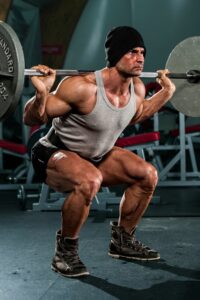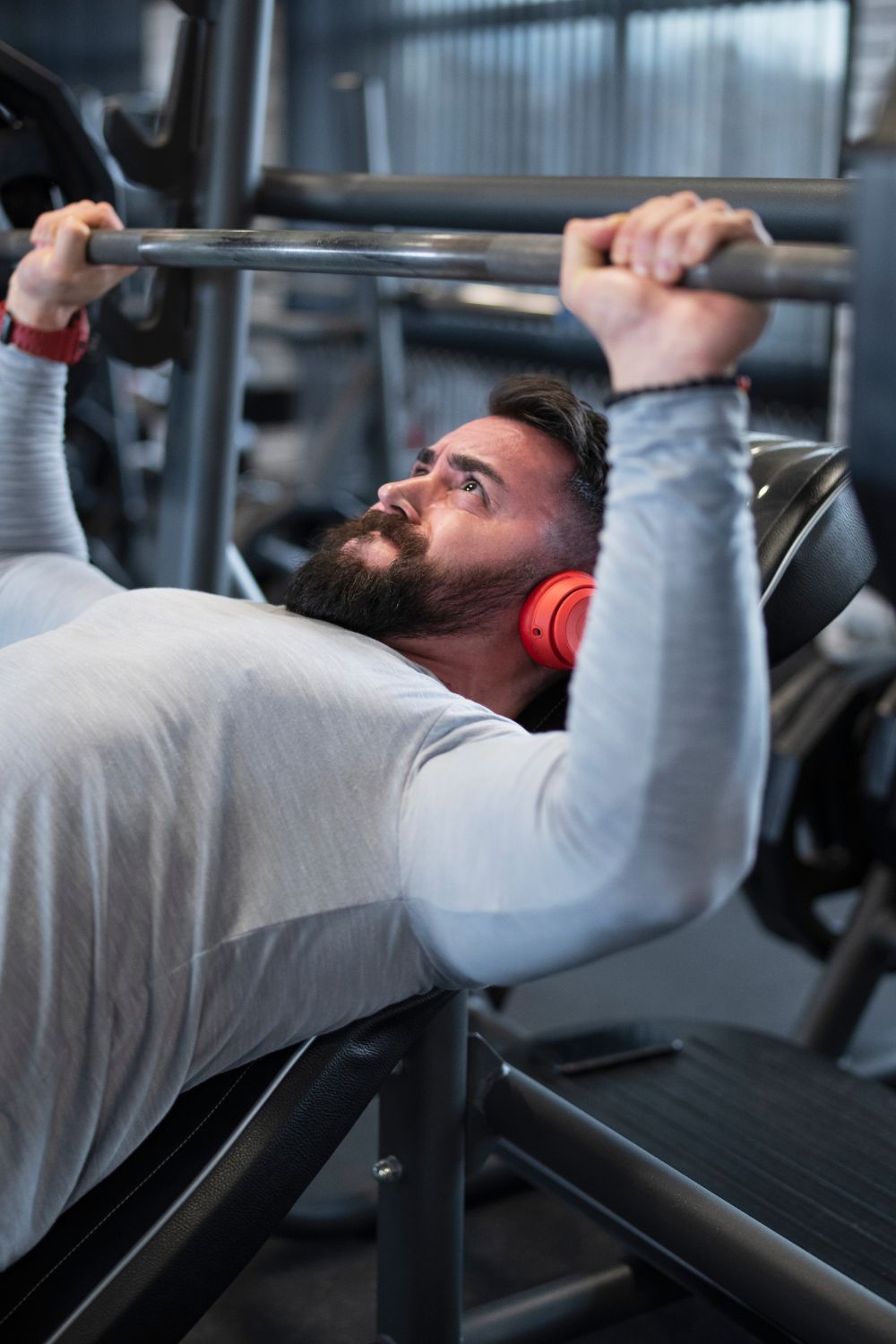Are you a fitness enthusiast or an athlete looking to optimize your strength and build a well-rounded physique? One common dilemma that arises in the world of strength training is when your squat is only 40lbs greater than your bench press. In this article, we’ll delve into this issue, explore the importance of balancing your upper and lower body strength, and help you decide whether it’s time to prioritize leg training. Let’s get started by understanding the significance of this strength discrepancy.
Balancing Your Strength: Is It Time to Focus on Leg Training
The Significance of Squat-Bench Discrepancy
When you notice that your squat is just 40lbs greater than your bench press, it may raise questions about your overall strength balance. The squat and bench press are both fundamental compound exercises that target different muscle groups: the lower body for squats and the upper body for bench presses. A noticeable imbalance between these two lifts could indicate several factors that need your attention.
Evaluating Your Strength Discrepancy
- Muscle Imbalance: A significant difference between your squat and bench press may suggest that your lower body muscles are relatively stronger than your upper body muscles. This could be due to a variety of reasons, such as genetics, training history, or personal preferences.
- Training Focus: Consider your recent training routine. Have you been prioritizing leg training or lower body exercises more than upper body exercises? Your training regimen can directly impact your strength gains in specific muscle groups.
- Technique and Form: Proper form and technique play a crucial role in the amount of weight you can lift in any exercise. If your bench press form is not optimal, it may be limiting your progress. The same applies to squats.
- Progressive Overload: Are you consistently increasing the weight you lift in both squats and bench presses? Progressive overload is a key principle in strength training, and if you’ve neglected it in one of these exercises, it could result in a strength gap.
The Importance of Balanced Strength
Balanced strength is not only aesthetically pleasing but also crucial for overall fitness and athletic performance. Here are a few reasons why you should strive for balance between your upper and lower body strength:
- Injury Prevention: Muscle imbalances can lead to overuse injuries. When one muscle group is significantly stronger than another, it can create stress and strain on joints and tendons.
- Functional Fitness: In everyday life, you use both your upper and lower body. A balanced physique ensures that you can perform daily activities more efficiently and with less risk of injury.
- Athletic Performance: In sports and athletic activities, balanced strength is vital. Whether you’re a runner, a weightlifter, or a basketball player, having both upper and lower body strength can enhance your performance.
- Aesthetics: Balanced strength contributes to a well-proportioned, aesthetically pleasing physique. It can help you avoid the “disproportionate” look that some individuals may want to avoid.
Should You Train Legs More?
If your squat is only 40lbs greater than your bench press, it might be a signal to consider reevaluating your training routine. Here are some steps you can take to address this strength discrepancy and decide whether you should focus more on leg training:
1. Assess Your Goals
First, think about your fitness and strength training goals. Are you primarily interested in aesthetics, sports performance, or general fitness? Your goals should guide your training focus. If aesthetics are your priority, then you may want to target specific areas for improvement. If you’re an athlete, consider the demands of your sport.

2. Reevaluate Your Training Routine
Review your current training routine to determine whether there is an imbalance in your exercises. Are you consistently working on your upper body, or do you find yourself skipping upper body workouts? Adjust your routine to ensure you’re giving equal attention to both upper and lower body exercises.
3. Seek Professional Guidance
Consulting a certified fitness trainer or strength coach can provide valuable insights into your specific situation. They can assess your form, technique, and overall training program, making recommendations tailored to your needs.
4. Implement Progressive Overload
To bridge the strength gap, focus on progressive overload in both squats and bench presses. Gradually increase the weight and volume of your workouts while maintaining good form. This approach will help you build strength in a balanced manner.
5. Consider Accessory Exercises
In addition to squats and bench presses, consider incorporating accessory exercises that target the weaker muscle groups. For example, include exercises like leg presses, lunges, or Romanian deadlifts to improve your lower body strength. For the upper body, try incorporating overhead presses and push-ups.
6. Monitor Your Progress
Keep a training journal to track your progress and strength gains in both squats and bench presses. Regularly assess your performance and make adjustments as needed.
Conclusion
Balancing your upper and lower body strength is essential for overall fitness, injury prevention, and optimal athletic performance. If you’ve noticed a significant strength discrepancy between your squat and bench press, it’s time to take action. Assess your goals, reevaluate your training routine, and focus on progressive overload to bridge the gap. Remember that seeking guidance from a fitness professional can be incredibly beneficial on your journey to balanced strength. By addressing this issue, you’ll not only improve your physique but also enhance your overall well-being and fitness level. So, let’s work towards achieving that strength balance and reaching your fitness goals.
A comparison tabular on this
Here’s a comparison table to visually represent the key points discussed in the article about balancing upper and lower body strength:
| Aspect | Significance | How to Address It |
|---|---|---|
| Strength Discrepancy | Indicates imbalance | Evaluate goals and training routine |
| Balanced Strength | Important for | – Aesthetics |
| injury prevention, | – Functional fitness | |
| functional fitness, and | – Athletic performance | |
| athletic performance | ||
| Should You Train Legs More? | Consider goals and | – Reevaluate routine |
| training program | – Seek professional guidance | |
| – Implement progressive overload | ||
| – Consider accessory exercises | ||
| – Monitor progress | ||
| External Resources | Additional information | 1. Bodybuilding.com |
| and guidance | 2. T-Nation |
This table provides a quick and concise overview of the main points discussed in the article, making it easier for readers to compare and grasp the key takeaways.
Final words
Balancing the strengths in your upper and lower body isn’t just about numbers on the bar; it’s about overall health, performance, and a body that functions at its best. Whether you’re striving for a symmetrical physique, aiming for improved athletic performance, or simply want to prevent injuries, paying attention to this discrepancy can make a significant difference. By reassessing your goals, tweaking your routine, seeking guidance, and staying consistent, you’re not just lifting weights—you’re sculpting a stronger, more balanced you. So, here’s to a stronger, more balanced journey ahead.
External Resources to Help You
If you’re interested in diving deeper into strength training, we recommend exploring the following resources:
- Bodybuilding.com: Bodybuilding.com is a comprehensive website that offers a wide range of training programs, exercise tutorials, and articles to help you improve your strength and physique.
- T-Nation: T-Nation is a valuable resource for strength training enthusiasts. It features in-depth articles, expert advice, and workout plans to take your training to the next level.

Hey there, it’s Mike Rrsq, the Editor-in-Chief over at Jsquat.com, and I’m absolutely obsessed with all things squat fitness! I’ve been lucky enough to get some serious recognition for my work in this field. With a solid background in the fitness and wellness industry, I’ve been there right from the get-go, helping shape this website into what it is today.
You see, I’m not just the boss around here; I’m also a passionate contributor. I love sharing my insights through my articles, and trust me, they’re not your run-of-the-mill stuff. Each piece I write is a labor of love, filled with my expertise and real-world experience in the fitness universe. So, if you’re into fitness and looking for some inspiration, you’re in the right place!

